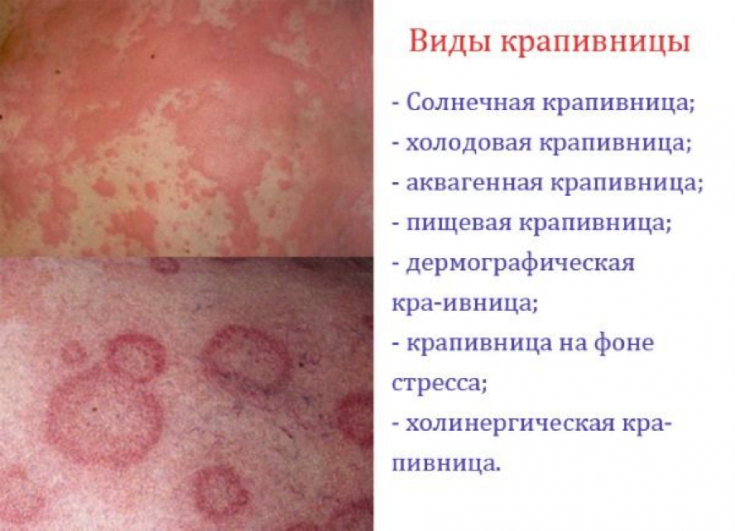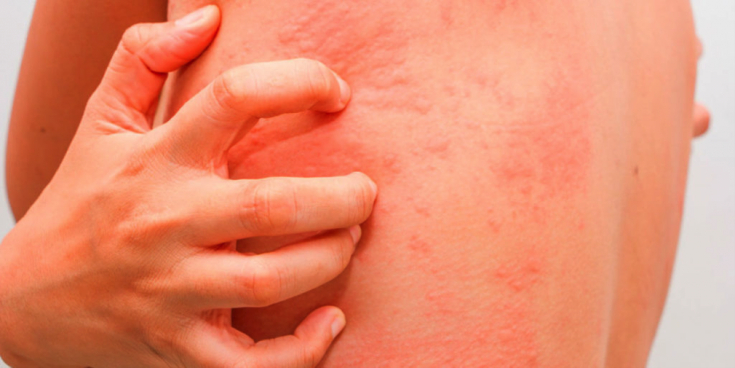Chronic urticaria (HC) is a heavy burden that does not allow the patient to feel comfortable. The impact of chronic urticaria on a person's quality of life is much more significant than just the deterioration of the skin condition. According to a study by MM Balo et al., 32.8% of patients with chronic urticaria report depression, 50.9% anxiety, 58% sleep disorders, and 39.7% job problems.
Find out in the article on estet-portal.com what are the leading causes of chronic urticaria, as well as what modern medications have the highest efficiency in the treatment of this pathology.
- clinical concept of chronic urticaria
- study of process activity in chronic urticaria
- management of chronic urticaria
Clinical concept of chronic urticaria
According to the guidelines, urticaria is characterized by the appearance of spontaneous blisters, angioedema, or both.
Subscribe to our page on Instagram!
Wheals have characteristic features: a central swelling of varying size that is almost always surrounded by reflex erythema; itching or burning sensation; transient character with the skin returning to normal after 30 minutes - 24 hours
Skin lesions in systemic lupus erythematosus
According to the duration of the course, urticaria is divided into acute (≤ 6 weeks) and chronic (> 6 weeks), according to the features of occurrence ─ into spontaneous (without a specific provoking factor) and inducible. Inducible urticaria, for example, includes such varieties as cold, solar, thermal, aquatic, cholinergic (with an increase in body temperature), contact, etc.
Study of process activity in chronic urticaria
To assess disease activity, use the appropriate index ─ Urticaria Severity Index 7 (UAS7), which is calculated by counting the number of bubbles (<20 in day ─ 1 point, 20-50 ─ 2 points, > 50 or large blisters, merging ─ 3 points) and assess the severity of itching (mild ─ 1 point, moderate ─ 2 points, intense itching, which interferes with daytime activity and sleep ─ 3 points). So, during the day you can get from 0 to 6 points.
It should be remembered that angioedema can be life-threatening for the patient.
Beware of the fungus! How does a dermatophytosis infection occur!
For further assessment of chronic urticaria activity, weekly scores are used (maximum ─ 42 points). Angioneurotic edema, in turn, is characterized by sudden, pronounced swelling (erythematous or skin-colored) of the lower dermis and subcutaneous fat (sometimes painful). At the same time, it disappears longer than blisters (up to 72 hours).
Management of chronic urticaria
The therapeutic approach to treating chronic urticaria should include identifying and addressing the underlying causes of the rash in order to avoid precipitating factors. Treatment should be continued as little as possible, but as long as is necessary for the complete disappearance of symptoms. Unfortunately, some patients require lifelong antihistamines (AHP) because symptoms recur after they are discontinued.

It should be noted that a significant proportion of patients with chronic urticaria do not achieve complete disappearance of subjectively unpleasant symptoms. For example, in a study by M. Maurer, 69% of respondents who needed treatment complained of itching or discomfort . Most of these problems could be solved through the transition to rational therapy. According to current algorithms for the treatment of chronic urticaria, one should start with 2nd generation antihistamines.
What can trigger an exacerbation of atopic dermatitis?
In the absence of adequate control (symptoms have not disappeared after 2-4 weeks), it is necessary to increase the dose. 2nd generation AHD should be taken regularly, concurrent use of several different AHDs is not recommended.

If such therapy fails, omalizumab is added to the antihistamine; if symptoms are not controlled after 6 months of treatment, cyclosporine is prescribed instead of omalizumab. These two stages of treatment, the patient must be under the supervision of a narrow specialist. Short courses of glucocorticoids are used for severe exacerbations.
What causes of acne can cause treatment failure?
For children, a similar treatment algorithm is used, with dose adjustments based on age or body weight. Only medicines with proven safety and efficacy should be used in pediatrics. Studied with long-term use: cetirizine, desloratadine, fexofenadine, levocetirizine, rupatadine, bilastine and loratadine. At the same time, 1st generation antihistamines should not be prescribed, since the duration of their administration is limited (up to 5 days). In addition, these drugs have a wide range of adverse reactions.
More useful information on our channel in Youtube:







Add a comment